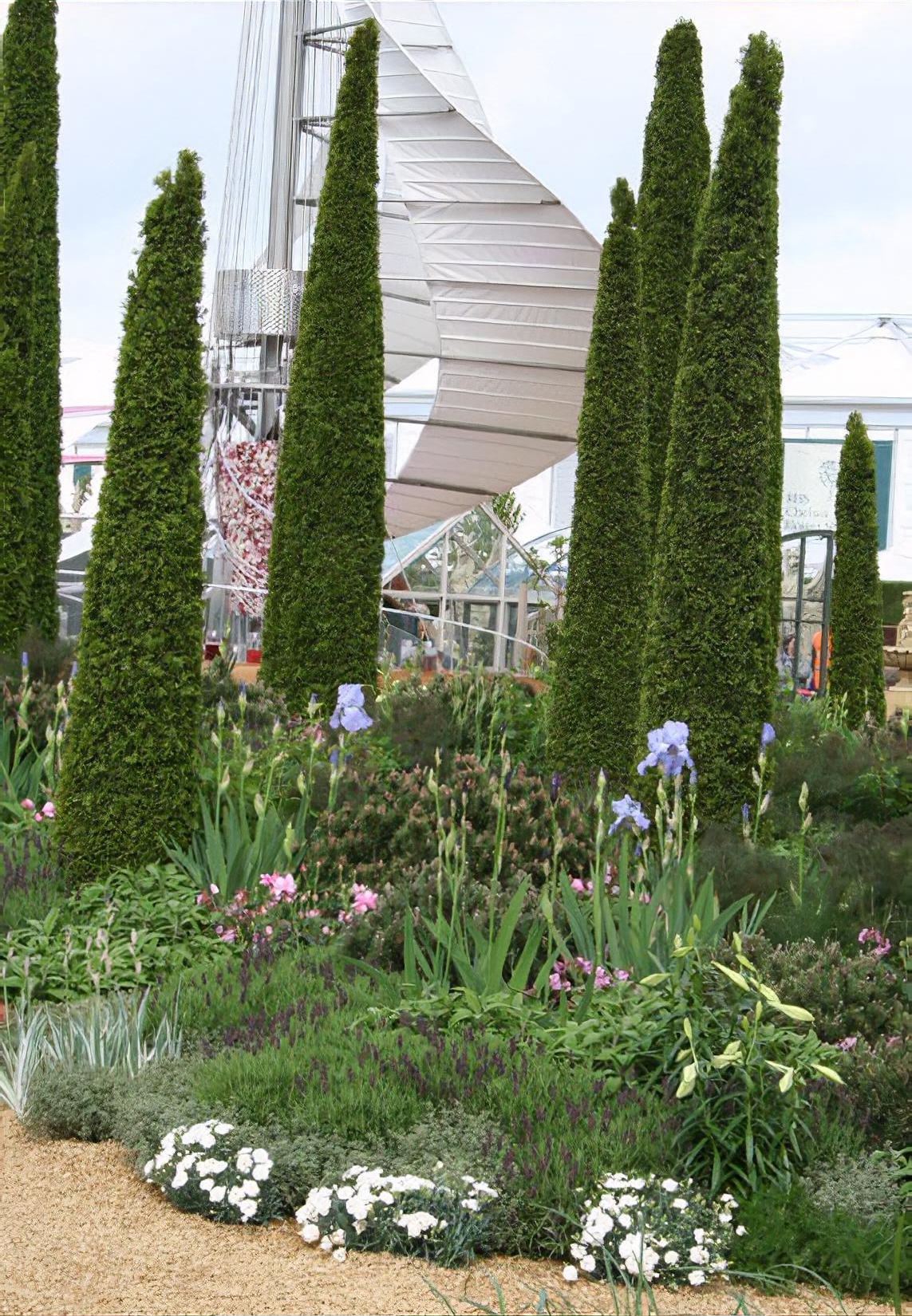Perfume Garden by Laurie Chetwood and Patrick Collins (Sample planting plan)

9 May 2009 | 1 min read
Four hundred years ago, Elizabeth I ordered a perfume to be specially created for her and the Perfume Garden represents an olfactory journey through time, from that earliest of perfumes to the modern day. (Click here for a sample planting plan and full plants list)

The journey starts in Grasse, south east France, where Elizabeth's perfume was recreated with the help of Jean Patou, one of France's oldest and best-known perfume houses. The development of perfume through the ages is traced from the plants used in this early scent combined with more modern ingredients.

Clipped conifers form the backbone of the garden, which sweep up and around a stainless steel shroud. This is the perfumery, where visitors can try the recreated perfume for themselves. Delicate spires burst from its heart and hold aloft petal-like canopies disguising photovoltaic cells and rainwater harvesting systems.

Every plant in the garden has a function in the creation of scent. Some are familiar, like Lavandula stoechas, but there are unexpected ingredients too, like the male fern, Dryopteris felix-mas, whose rhizomes yield an oil used in earthy, masculine fougère scents.
